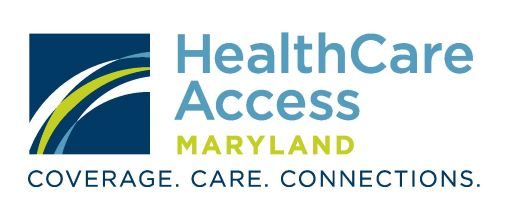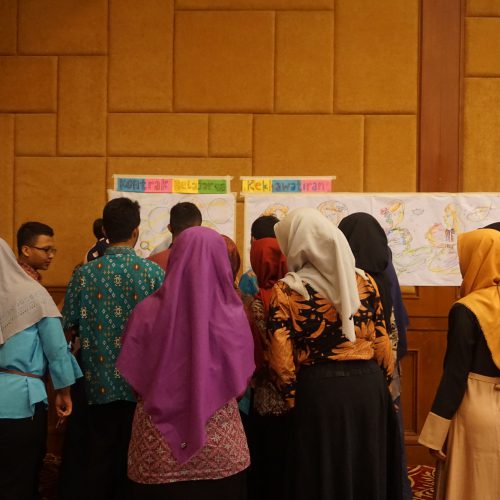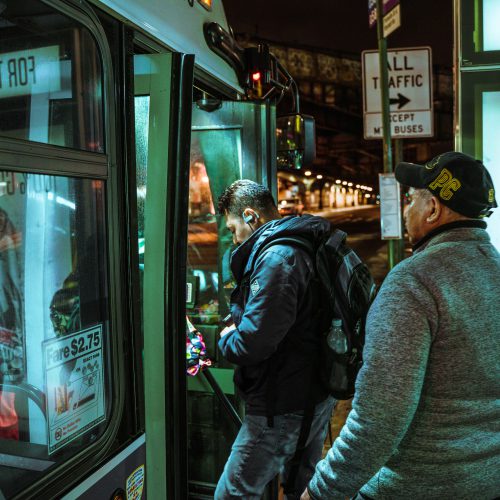More people in the United States have access to health care today than in 2010. According to the National Center for Health Statistics (NCHS), the percentage of uninsured people among all age groups decreased from 16% in 2010 to 9% in 2016.1 During the same time period, the percentage of people among all age groups who had a usual place to go for medical care increased from 85.4% to 88.1%.2 People without insurance are less likely to receive care and more likely to have poor health, while people with a usual place to go for care have better health outcomes and lower health care costs.3
Founded in 1997, HealthCare Access Maryland (HCAM) helps people in central Maryland enroll in private and public health insurance plans and connect to health care, behavioral health services, and community resources. Each year, HCAM’s staff works with more than 145,000 uninsured and underinsured individuals, including youth in foster care, people experiencing homelessness, pregnant and postpartum women, immigrants, and those living with addiction. Essentially, they work with anyone who is uninsured or needs help navigating their benefits.
helps people in central Maryland enroll in private and public health insurance plans and connect to health care, behavioral health services, and community resources. Each year, HCAM’s staff works with more than 145,000 uninsured and underinsured individuals, including youth in foster care, people experiencing homelessness, pregnant and postpartum women, immigrants, and those living with addiction. Essentially, they work with anyone who is uninsured or needs help navigating their benefits.
Breaking Down Individual Barriers to Care
In 2016, Maryland’s uninsured rate for all age groups was 5.6%, lower than the national average.4 But Traci Kodeck, Chief Executive Officer of HCAM, says access to health care remains a challenge for the state. “Our health system is complex and constantly changing,” she explains. “For example, some people need help figuring out how to find a primary care provider.”
“Then you layer in the social issues we’re facing,” she adds. “We have high rates of homelessness, opioid addiction, and homicide—as well as chronic health conditions like hypertension, diabetes, and asthma.”
Kodeck says HCAM’s approach to increasing access to health care works because it focuses on the whole person. “We try to clearly understand where people are coming from and the individual barriers they’re facing—and to be as flexible as possible in helping them and their families.”
Partnering to Help People Navigate Health Insurance and Care
HCAM has various programs that help people get health insurance, understand their benefits, and connect to services. For many of these programs, community partnerships play a key role.
- The Care Coordination Program
 works with Baltimore City managed care organizations, providers, and case managers to find Medicaid enrollees who have missed or failed to make appointments—and helps them understand and use their health benefits.
works with Baltimore City managed care organizations, providers, and case managers to find Medicaid enrollees who have missed or failed to make appointments—and helps them understand and use their health benefits. - The Population Health Program
 partners with the Baltimore City Fire Department and emergency departments in 3 central Maryland hospitals to identify and assist people who are frequent users of emergency services or inpatient care because they’re uninsured or have an unmanaged chronic health condition.
partners with the Baltimore City Fire Department and emergency departments in 3 central Maryland hospitals to identify and assist people who are frequent users of emergency services or inpatient care because they’re uninsured or have an unmanaged chronic health condition. - The Behavioral Health Outreach Program
 works with people who are enrolled in substance abuse and mental health treatment programs in Baltimore County, Baltimore City, and Anne Arundel County.
works with people who are enrolled in substance abuse and mental health treatment programs in Baltimore County, Baltimore City, and Anne Arundel County. - The Connector and Eligibility programs help individuals and families navigate private health plans and Medicaid through Maryland Health Connection
 .
.
Connecting Foster Children to Health Care
HCAM’s Making All the Children Healthy (MATCH) Program works closely with caseworkers from the Baltimore City Department of Social Services and foster or kinship parents to make sure foster children receive the health care they need. HCAM coordinates health assessments for the children, enrolls them in Maryland Medicaid, and helps them coordinate health, dental, and behavioral health services.
works closely with caseworkers from the Baltimore City Department of Social Services and foster or kinship parents to make sure foster children receive the health care they need. HCAM coordinates health assessments for the children, enrolls them in Maryland Medicaid, and helps them coordinate health, dental, and behavioral health services.
In 2014, the MATCH program tracked 2,309 children in foster care. Of these, 91% had a well-child visit within the past year. In addition, 91% of children new to the program had a comprehensive health assessment (medical, dental, and mental health) within 60 days of enrollment, and 72% of appointments scheduled were verified as kept.5
Success by the Numbers:
In the first 5 months of 2017, HealthCare Access Maryland has:6
- Enrolled 41,492 people in medical assistance (includes Medicaid, Medicare, and Maryland Children’s Health Program)
- Enrolled 14,938 people in qualified health plans
- Scheduled 1,431 medical appointments, including 795 with primary care providers (PCPs)
Empowering People to Manage Their Health Care
Kodeck stresses that a critical part of this work is connecting people to support services like housing, transportation, and child care. “We ask people what’s keeping them from getting to the doctor,” she says. “Sometimes the office is on the other side of town and there’s no bus that goes there, or they need the bus money for food. We could give everyone coverage and a PCP, but if they can’t get to the appointment, their health outcomes won’t change.”
Another example of these connections involves a partnership HCAM had with the Baltimore City Detention Center. In order to apply for insurance, people in prison needed state-issued ID cards, but many couldn’t afford the fee. HCAM secured foundation money to pay the fees, and the Motor Vehicle Administration agreed to bill HCAM directly. This helped people in prison enroll in health insurance, cash checks, find housing, and apply for jobs.
“I see the work that my staff does,” Kodeck says, “the lengths they go to help people, to empower them to better manage their health care, to put things in place to improve the health care system. They’re making a difference in people’s lives every day.”
1 NCHS, National Health Interview Survey, 2016, Family Core component. https://www.cdc.gov/nchs/data/nhis/earlyrelease/Earlyrelease201705_01.pdf
2 NCHS, National Health Interview Survey, 2016, combined Sample Adult and Sample Child Core components. https://www.cdc.gov/nchs/data/nhis/earlyrelease/earlyrelease201705_02.pdf
3https://www.healthypeople.gov/2020/topics-objectives/topic/Access-to-Health-Services
4 NCHS, National Health Interview Survey, 2013–2016, Family Core component. https://www.cdc.gov/nchs/data/nhis/earlyrelease/insur201705.pdf
5http://www.healthcareaccessmaryland.org/programs-services/match
6 Data provided by HealthCare Access Maryland.







